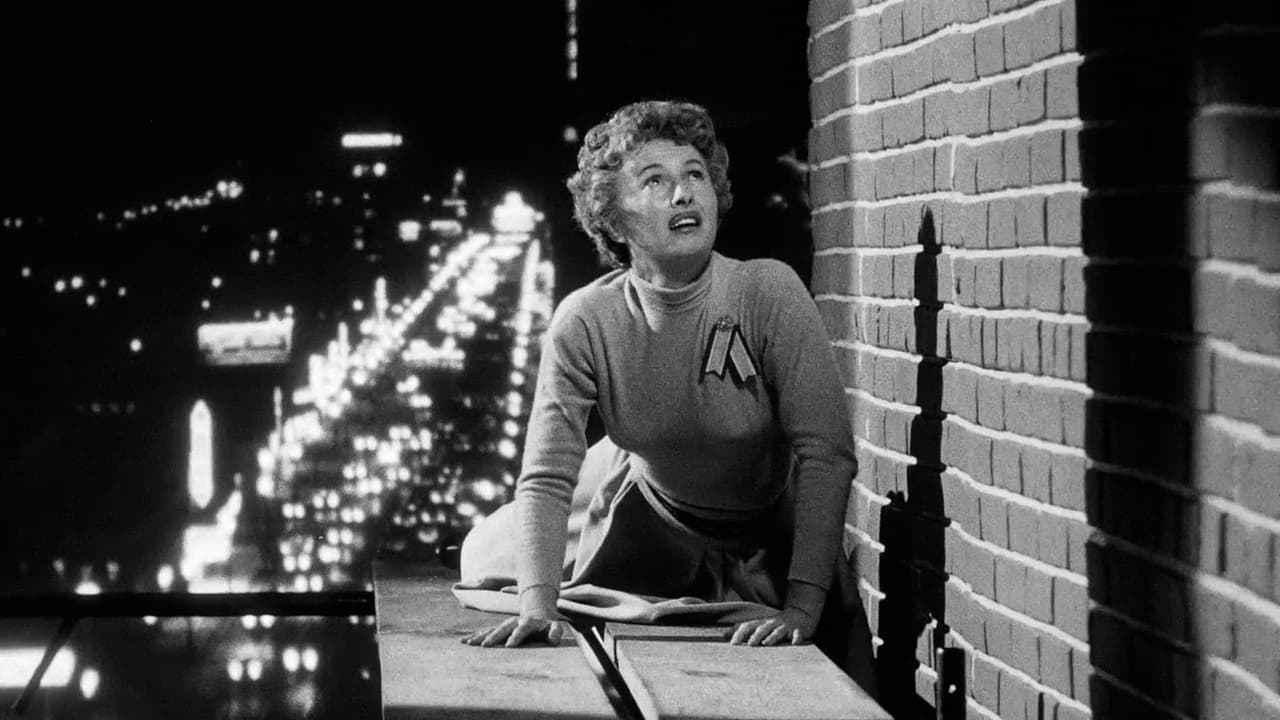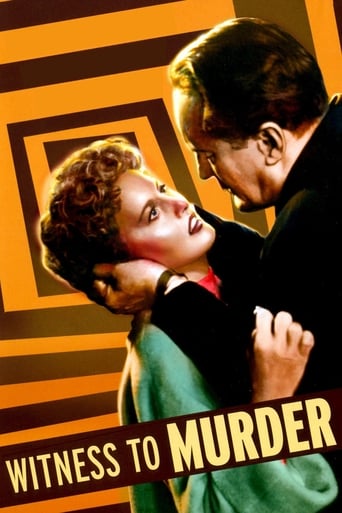

The performances transcend the film's tropes, grounding it in characters that feel more complete than this subgenre often produces.
... View MoreI think this is a new genre that they're all sort of working their way through it and haven't got all the kinks worked out yet but it's a genre that works for me.
... View MoreThe tone of this movie is interesting -- the stakes are both dramatic and high, but it's balanced with a lot of fun, tongue and cheek dialogue.
... View MoreThere's a more than satisfactory amount of boom-boom in the movie's trim running time.
... View MoreWitness to Murder is like witnessing the acting talents of great movie stars, not quite having neared their expiration date in a Hollywood that throws away anything that might be the slightest bit rancid. But this film, with its carefully stewed leftovers, comes to a slow boil and gives off a robust cinematic aroma.The first ingredient is the wonderful use of Los Angeles exteriors, especially the apartment buildings and high rise development. Next, we have the interactions between Miss Stanwyck and her two male costars (especially the delicious George Sanders). But what really makes it cook is the fact that you get what you pretty much expect from these performers: Stanwyck is tough yet chewy; Sanders is seasoned with sage; and Gary Merrill provides a durable texture. I guarantee you: there is no bad film noir after-taste.
... View MoreThe premise for "Witness to Murder" is very good but the film suffers from one serious problem--the writing. In the movie, the police almost immediately assume that a person who reported a murder is either wrong or crazy. Maybe I am a bit naive, but I really don't believe that the police would be so fast to do this and would take a reported murder A LOT more seriously. However, in the world of this film, they very quickly assume this is the case...too quickly to be realistic. Later, other such stupid assumptions sink the film."Witness to Murder" begins, not surprisingly, with Barbara Stanwyck looking out her apartment window and seeing a woman being killed in an apartment across from hers. She does what any person would do--contacts the police. And, almost immediately they assume she is wrong! Later in the film one of the cops (Gary Merrill) starts to wonder and actually begins to do his job! But, the smooth killer contacts the idiot police Captain and convinces him that he's being harassed by Stanwyck--and they lock her in the loony bin! I was frustrated by the film--it just assumed something that the film simply didn't establish. Had they had Stanwyck ACT crazy or the police investigated thoroughly THEN they assumed she was wrong it COULD have worked well.Fortunately, the film did get better...for a while. Once Stanwyck was released from the hospital, Sanders actually torments her--telling her that he DID kill the lady but that now no one would believe her! This was great--and I really wanted to see more of this. But, it then gets stupid again when Sanders is in her apartment late in the film and a neighbors SEE this and hears Stanwyck cry for help, they immediately assume she's crazy--even though they have no idea about the investigation and police opinions about Stanwyck's sanity. If a neighbor cried out for help, I sure as heck would have done SOMETHING!!! The bottom line is that the acting is fine--the writing was not. However, it's is a VERY frustrating movie. It could have been good and had a good cast...but ultimately was crap due to wretched writing...just wretched.
... View MoreAs you can tell by my headline, I found this a shockingly inferior film. And sad to experience, as a fan of Barbara Stanwyck, that she had reached the age and stage of her career, where was challenged to bring her craft to inferior scripts and directors. The story was infuriatingly sexist, even for the 50s. Because she is a woman, she is brushed off, and told to calm down. I found Gary Merrill's reprise from All About Eve of the smug man who has to patronizingly calm down the little woman absolutely infuriating. As a side note, he's lucky to have AAE in his credits, because he is a mediocre actor lucky enough to be in a famous picture, and he was the same in every role. Obviously Stanwyck is fine here, as usual. But it's such an implausible absurd story that it's hard to really suspend disbelief, when cops don't do rudimentary investigation into a murder allegation. And Stanwyck's incarceration in the booby hatch was so ridiculous that I just fast forwarded through what looked like outtakes from the Snake Pit. There were plot holes to drive a bus through, and plot contrivances and impossibilities that were eye-rolling. She's running down the street shrieking, and everyone is just compliantly following ? And how many duplicate scenes of a) Merrill telling Stanwyck to calm down and see reason and b) Stanwyck reluctantly agreeing against her instincts. Over. And over. And over. Oh - and for all you folks that love t throw around the word Noir when there is a hint of a) night; b) shadow; c) murder; d) black and white -- those do not Noir make, which require a femme fatale, a weak male (usually), hard-boiled dialogue and (often) Voice-over, and a pervasive cynicism. None of which this film, a murder-suspense, is. Shows you that even an A cast can't overcome a bad script and direction.
... View MoreWITNESS TO MURDER is one of the great unsung noir gems from the 1950s. Sharply directed by Roy Rowland and brilliantly photographed by John Alton, it is criminal that this terrific film has yet to see a DVD release.Barbara Stanwyck stars as a woman who inadvertently witnesses a murder one night when, awakened by a thunderclap, goes to her window and sees her neighbor in an apartment across the street (George Sanders) strangle a woman to death. Shaken but collected, she phones the police who respond to the call but are unable to detect anything out of the ordinary when they arrive to question Sanders. The detectives (Gary Merrill and Jesse White) leave Sanders' apartment convinced that Stanwyck imagined the killing. Determined to prove the cops wrong, she begins to relentlessly hound Sanders who, it turns out, is a former Nazi and author of books promoting the ideology of the Third Reich. Sanders, a cunning adversary, initiates a retaliatory strike against Stanwyck which, before long lands her in a mental asylum. But will she be able to convince Detective Gary Merrill (who by now has fallen in love with her) that her assertions are, after all, true?Darkly suspenseful, albeit preposterously improbable, WITNESS TO MURDER follows a similar thread as REAR WINDOW, released the very same year. The most significant difference being in the Hitchcock film James Stewart is a consciously willing voyeur, drawn into a secret world of spying brought on by his own inertia; Stanwyck succumbs to the ramifications of her voyeurism purely by an accident of nature, the victim of circumstances far beyond her control, placing it much more squarely in the domain of film noir than its better known counterpart. Highly recommended!
... View More